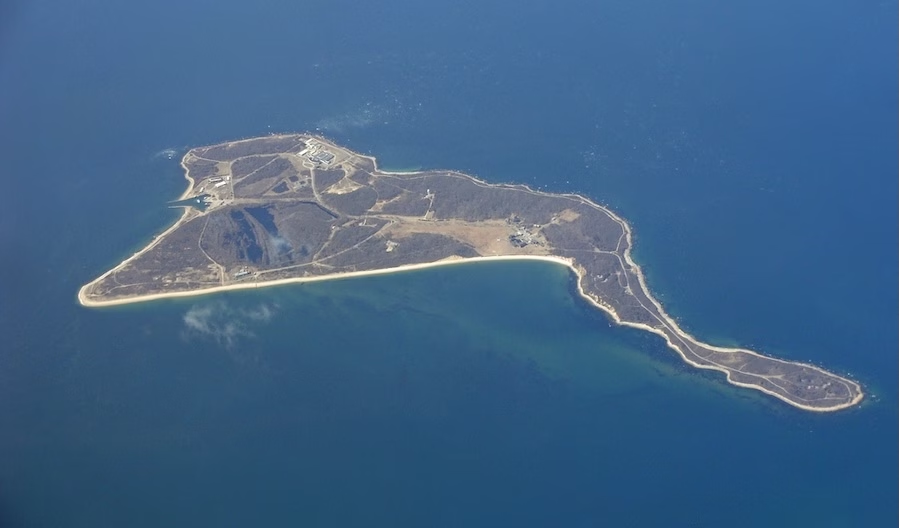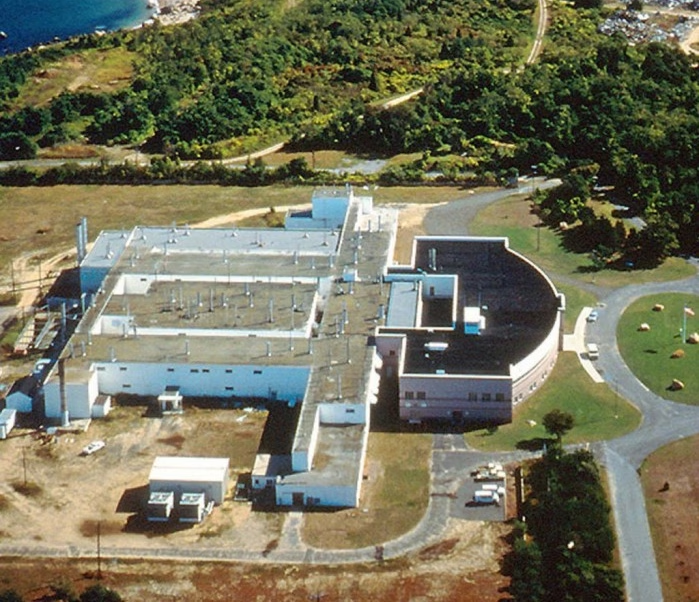Off the eastern tip of Long Island, just past Orient Point, sits Plum Island—a place most Long Islanders know by name, but few know much about. You can’t visit it. You can’t really see it. And you definitely can’t Google it without stumbling into a rabbit hole of conspiracy theories. But here’s the truth: Plum Island has a deep and strange history full of war stories, scientific breakthroughs, government secrecy, and some real-life oddities that would give any thriller novel a run for its money.
Let’s separate the facts from the fiction—starting with what the lab definitely does not do.
What the Lab Doesn’t Do (Despite the Rumors)
Let’s get this out of the way early: Plum Island did not invent Lyme disease. Despite persistent rumors—reignited most recently by Health and Human Services Secretary Robert F. Kennedy Jr.—there’s no scientific or historical evidence linking Plum Island to the origins of Lyme. The bacteria that causes the disease, Borrelia burgdorferi, has been found in ticks collected from Montauk in the 1940s—years before the lab was established in 1954. It’s even been detected in a 5,300-year-old mummy found in the Alps. Leading experts, including Stony Brook researcher Jorge Benach and the Department of Homeland Security, have publicly confirmed the lab has never conducted Lyme-related research. The confusion likely stems from a past tick-based study on African swine fever, which used soft-bodied ticks that were destroyed at the conclusion of the study. Books like Lab 257 and Bitten fueled popular theories, but even their authors admit they found no direct evidence connecting Plum Island to Lyme. As infectious disease experts say, it’s a theory built more on fear than on fact.
-
Despite persistent myths, Plum Island has never conducted research on Lyme disease.
-
It also does not work on human diseases or prion-based neurodegenerative conditions.
-
While the lab was once asked to help with a West Nile outbreak that affected horses on Long Island, it has never conducted long-term research on the virus.
-
The island’s focus is strictly on foreign animal diseases—no alien viruses, no secret human experiments, no mad scientists with glowing test tubes. Sorry, Reddit.
A Quick Orientation
-
Plum Island is part of Southold in Suffolk County.
-
It lies in Gardiners Bay, just east of Orient Point and 1.5 miles off the North Fork.
-
It covers about 840 acres and measures roughly 3 miles long and 1 mile wide.
-
It’s named for the beach plum bushes that still grow along the shore.
From Cornfields to Cannons: The Early Years
-
Indigenous people called the island Manittuwond, meaning “the island to which we go to plant corn.”
-
Dutch explorer Adriaen Block was the first European to chart the island—he’s the same guy Block Island is named after.
-
During the Pequot War (1637–1639), Plum Island served as a key strategic point in what’s considered the first armed conflict between Native Americans and Europeans in the region.
-
In 1659, the Montauketts reportedly sold the island to an English settler for a coat and a few tools.

Military Might and Missed Resort Dreams
-
A Revolutionary War-era skirmish between the Continental Army and British forces may have included cannon fire launched from Plum Island, making it one of the earliest amphibious assaults in American history.
-
In the 1800s, there were dreams of turning the island into a beach resort, but those plans were scrapped after tensions from the Spanish-American War led the government to establish Fort Terry there in 1897.
-
The U.S. military later used the island during both World Wars.
-
In 1914, a court martial was held on the island for Major Benjamin Koehler, who was accused of inappropriate conduct toward male soldiers. The case helped influence future military policies on homosexuality and laid groundwork that would echo decades later with “Don’t Ask, Don’t Tell.”
-
The Boys Club of New York, aiming to give street kids a taste of nature, once ran a summer camp on the island when it was owned by wealthy industrialist Abram Hewitt.
From Fort to Foot-and-Mouth: Science Takes Over
-
In the early 1950s, the Army briefly ran a biological warfare program in Building 257 on the island, but it didn’t last long.
-
In 1954, the U.S. Department of Agriculture established the Plum Island Animal Disease Center (PIADC) to combat foot-and-mouth disease and other foreign animal threats.
-
A 1978 outbreak of foot-and-mouth disease on the island was quickly contained, but it forced the destruction of over 200 animals and led to tighter containment policies.
-
Since 2003, the lab has been operated under the Department of Homeland Security.
-
That same year, an internal audit found 539 security vulnerabilities at the facility—93 of them classified as high risk.
-
In 2008, a captured al Qaeda operative was found with a list of U.S. targets, and Plum Island was on it.

What the Lab Does Do
-
PIADC focuses on preventing the accidental or intentional introduction of foreign animal diseases into the U.S., especially foot-and-mouth disease.
-
It is the only lab in the U.S. allowed to work with live foot-and-mouth disease virus.
-
Around 400 employees work on vaccine development, diagnostics, response training, and bioforensics.
-
Though foot-and-mouth disease was eradicated in the U.S. in 1929, preserved samples remain stored in high-security freezers.
-
After the devastating 2001 outbreak in the U.K.—which resulted in over $8 billion in economic losses and 6.2 million animals slaughtered—Plum Island’s research gained renewed importance.
-
The lab helped assess how to decontaminate surfaces from African Swine Fever in 2019, a growing threat to the pork industry.
-
All biocontainment waste is subjected to rigorous decontamination using heat, chemicals, and incineration before leaving the island.
-
The budget for the lab was reported at $16.5 million in 2002.
-
Deer occasionally swim to Plum Island from the mainland and are euthanized on arrival to prevent any chance of disease transmission.
-
Key clients include the USDA, FBI, National Veterinary Stockpile, and private industry partners.
In Literature and Pop Culture
-
Nelson DeMille’s novel Plum Island turned the lab into a murder mystery setting and fueled public fascination.
-
In The Silence of the Lambs, Hannibal Lecter mentions Plum Island, calling it “Anthrax Island.”
-
A World Unto Itself, written by a local historian and published by the Southold Historical Society in 2014, offers the most in-depth real-world history of the island.
The Future (and Possible Sale) of Plum Island
-
In 2008, the Department of Homeland Security instructed the GSA to prepare Plum Island for sale.
-
The research currently housed on the island will be relocated to the National Bio and Agro-Defense Facility in Manhattan, Kansas.
-
The GSA has an active listing for the island that includes ferries and government vehicles as part of the deal.
-
In 2016, the Trump Organization reportedly expressed interest in turning the island into a golf resort—an idea that was met with strong local opposition.
-
Representative Lee Zeldin co-sponsored legislation in 2019 to block the sale and ensure that the island remains protected for conservation, education, or research purposes.
-
The Town of Southold has preemptively zoned the island to prevent any luxury development, mandating that most of the land remain as preserved open space.
-
The future use of the island is legally limited to activities similar to its current function.
Whether it becomes a national park, a research sanctuary, or a historic site, one thing is clear—Plum Island isn’t just some off-limits place in the foggy distance. It’s part of Long Island’s past, present, and maybe even its future. Just don’t expect to book a ferry ride there anytime soon.
Photo: See page for author, Public domain, via Wikimedia Commons and kyselak, CC BY-SA 3.0, via Wikimedia Commons




